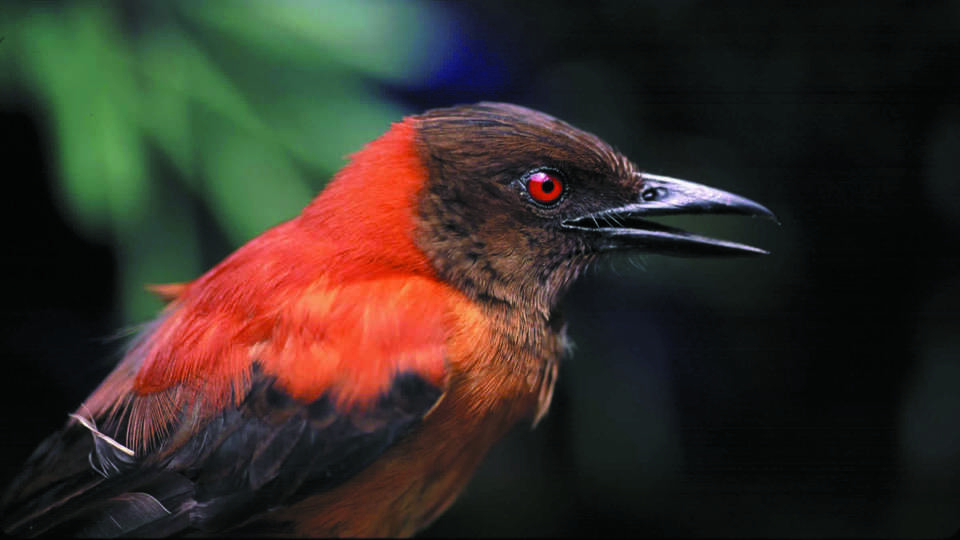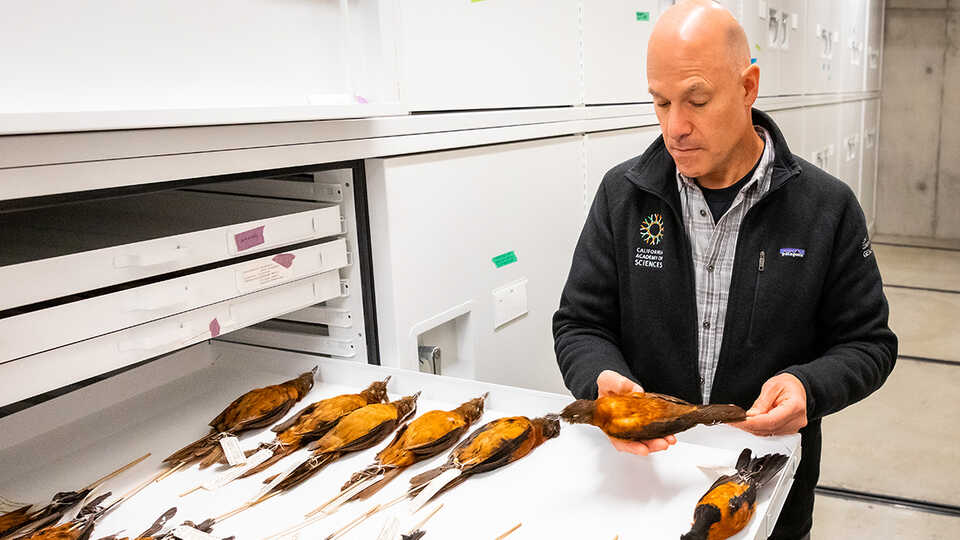The Institute for Biodiversity Science and Sustainability at the California Academy of Sciences is at the forefront of efforts to understand two of the most important topics of our time: the nature and sustainability of life on Earth. Based in San Francisco, the Institute is home to more than 100 world-class scientists, state-of-the-art facilities, and nearly 46 million scientific specimens from around the world. The Institute also leverages the expertise and efforts of more than 100 international Associates and 450 distinguished Fellows. Through expeditions around the globe, investigations in the lab, and analysis of vast biological datasets, the Institute’s scientists work to understand the evolution and interconnectedness of organisms and ecosystems, the threats they face around the world, and the most effective strategies for sustaining them into the future. Through innovative partnerships and public engagement initiatives, they also guide critical sustainability and conservation decisions worldwide, inspire and mentor the next generation of scientists, and foster responsible stewardship of our planet.
Researchers show “toxin sponges,” not mutations, may help toxic animals avoid poisoning themselves
SAN FRANCISCO, CA (August 5, 2021) — Though poisonous animals have been subject to scientific inquiry for decades, the question of how some species avoid poisoning themselves has gone unanswered. Now, a team of researchers at the California Academy of Sciences, UC San Francisco, and Stanford University have uncovered some intriguing clues in poison birds and frogs that could help solve the mystery of how they evade their own toxins. In doing so, their study, published today in the Journal of General Physiology, may lead to a much-sought-after antidote for other poisons, including paralytic shellfish poisoning (PSP) experienced by people eating shellfish gathered after red tides, such as those that have recently plagued coasts of Florida and the Gulf of Mexico.
“We’ve shown that these animals are not avoiding self-poisoning—or autointoxication—with mutations, which was the prevailing theory,” says Academy Curator of Ornithology and Mammalogy Jack Dumbacher, PhD, who is one of the senior authors on the study. “This leaves open a field of other possibilities, including ‘toxin sponge’ proteins that may bind and safely transport toxins.”
For the study, the researchers looked at the Pitohui birds of New Guinea and the golden poison frog of Colombia, Phyllobates terribilis, a fluorescent yellow frog known for its use in poisoning dart tips. Both animals derive their poison, batrachotoxin (BTX), which is hundreds of times more toxic than cyanide, from their diet, but how they avoid autointoxication was less understood.
“It has been one of the most interesting unanswered questions about these species,” says Dumbacher, who discovered the Pitohui birds’ toxicity nearly 30 years ago after being bitten by one of the birds and putting his finger in his mouth to clean the cut, and soon felt his tongue and lips tingling.
In an effort to answer that question, Dumbacher recruited the help of UCSF Cardiovascular Research Institute Professor Dan Minor, Jr., PhD, who was co-senior author on the study.
To get a better picture of toxin resistance in the birds and frogs, Minor and his team compared the activity of BTX to that of saxitoxin (STX), another highly poisonous substance that has been widely studied and was once used in now-banned chemical weapons.
Both neurotoxins work on the same structures in the cell membrane, tiny tunnels called sodium-channel proteins. These tunnels are usually closed but they open to allow sodium to flow into the cell. STX and many other neurotoxins act like a cork, plugging the sodium channel, but BTX takes the opposite tack, holding the channel open.
“Holding the channel open really gums up the works,” Minor says of BTX. “These compounds are so dangerous because these open channels affect electrical signals in the heart and nervous system, causing deadly arrhythmias and paralysis.”
While it’s been widely believed for years that toxic animals have mutations in their channel proteins that keep them from being poisoned, the research team has shown that’s not the case in Pitohui birds and P. terribilis.
To do so, the team first isolated the sodium channels from the poison birds and frogs and found that their mutations were incapable of protecting against BTX poisoning. In further experiments, the researchers determined that these channels were highly sensitive to both BTX and STX. At the same time, they found that captive-raised poison frogs, who bore similar channels but weren’t poisonous, were still totally resistant to both toxins.
“These observations clearly taught us that something was preventing these toxins from reaching their target channels in the first place,” says postdoctoral scholar at UCSF and first author on the study Fayal Abderemane Ali, PhD.
The researchers surmised that there must be a mechanism other than mutation at play behind the birds’ and frogs’ avoidance of autointoxication.
Inspired by the protein saxiphilin, which bullfrogs produce, and which can bind to STX, the researchers wondered whether the poisonous effect of STX could be reversed if saxiphilin was introduced. To test this hypothesis, the researchers first confirmed that the sodium channels they’d isolated from P. terribilis were poisoned by STX, after which they introduced saxiphilin and found that they were able to reverse the poisonous effect.
“We showed that this kind of toxin-binding protein can rescue or protect sodium channels from the effects of STX,” Minor says. “That means that this is a real, viable mechanism for preventing poisoning.”
For Dumbacher, discovering mechanisms in the natural world that could potentially lead to antidotes for STX and BTX poisoning is another example of the overlap between nature and human health.
“Every animal has evolved its own solutions to the same problems that humans face,” Dumbacher says. “By studying the solutions that other animals have come up with, we are also studying novel solutions that humans can use in our own medicine."
The University of California, San Francisco (UCSF) is exclusively focused on the health sciences and is dedicated to promoting health worldwide through advanced biomedical research, graduate-level education in the life sciences and health professions, and excellence in patient care. UCSF Health, which serves as UCSF’s primary academic medical center, includes top-ranked specialty hospitals and other clinical programs, and has affiliations throughout the Bay Area. UCSF School of Medicine also has a regional campus in Fresno. Learn more at ucsf.edu or see our Fact Sheet.
Press Contacts
If you are a journalist and would like to receive Academy press releases please contact press@calacademy.org.
Digital Assets
Hi-res and low-res image downloads are available for editorial use. Contact us at press@calacademy.org to request access.

